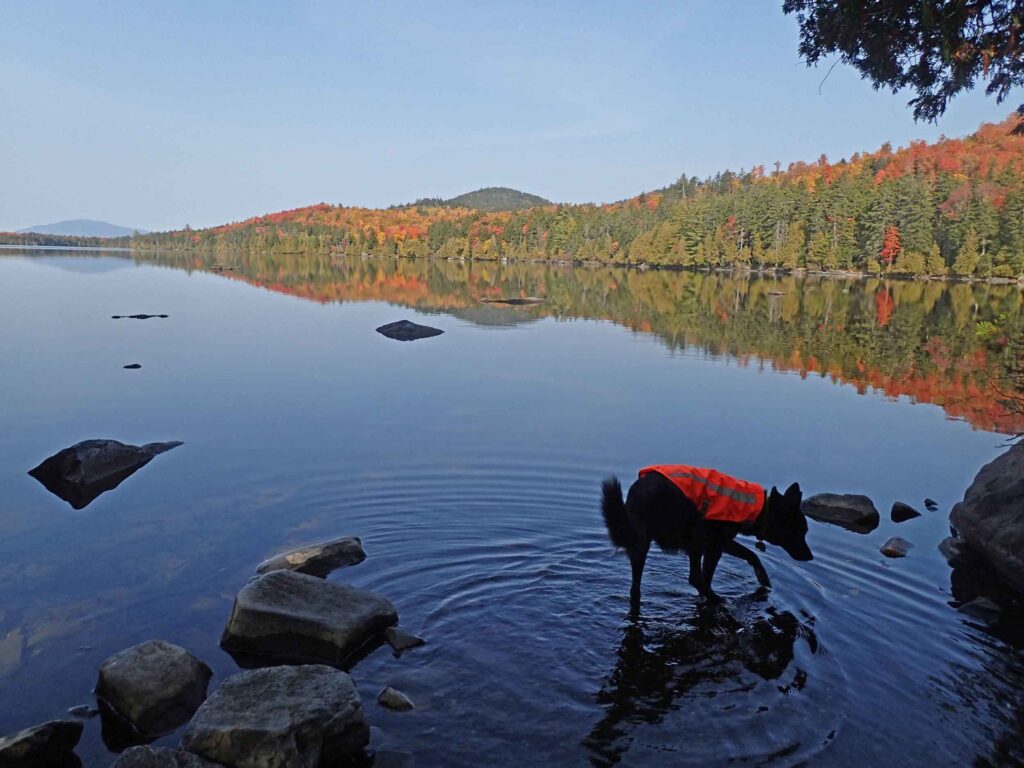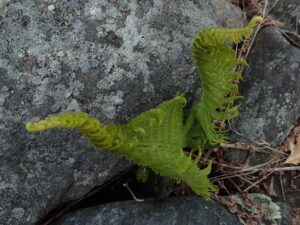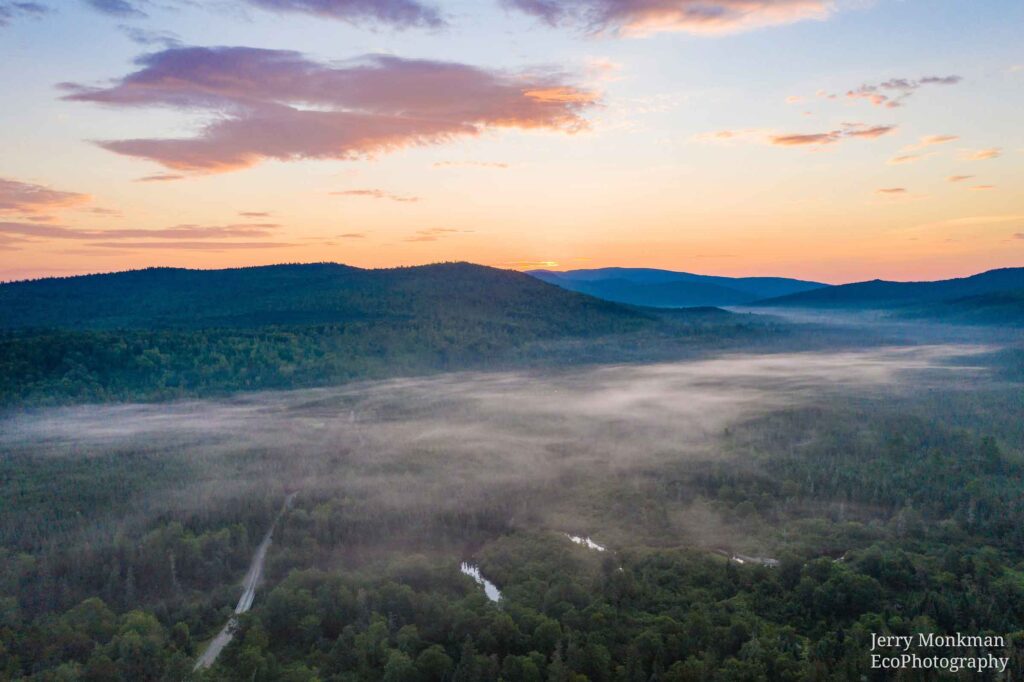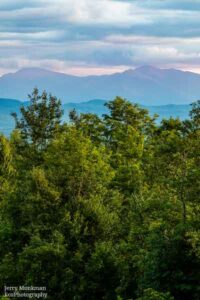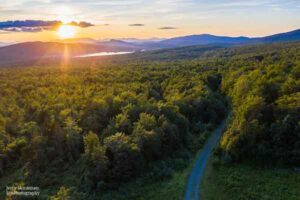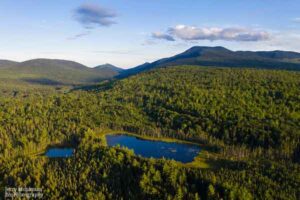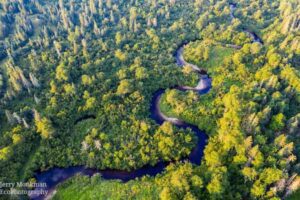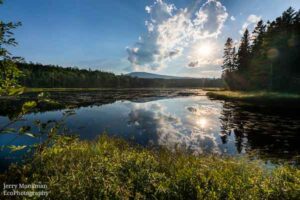Article originally published in the 2020 fall edition of Forest View, FSM’s biannual newsletter.

About 35,000 years ago, a carpet of ice thousands of feet thick covered much of New England. At one point all of Maine was hidden beneath the Laurentide Ice Sheet, even the highest points on Katahdin. Evidence of this history is easy to find: deposits of sand, till, and large boulders known as glacial erratics that were left behind as glaciers retreated 10,000 years ago are still common on Maine’s landscape today.
In Coburn Gore, where FSM is working with family landowners to conserve approximately 8,300 acres, glaciers have helped to create natural features such as steep cliffs and kettlehole bogs. The Maine Natural Areas Program (MNAP) describes kettlehole bogs as “flat peatlands that formed in “kettles”—circular or elliptical depressions in glacial deposits created by the melting of buried ice blocks.” If you were to fly over Maine’s North Woods, you would likely notice the kettlehole bogs by the vibrant red color of the sphagnum moss (Sphagnum rubellum)—also known as peat—that grows there.
Bogs are highly acidic environments and wet soils are low in oxygen. Few plants are adapted to survive in these conditions. Besides peat, common bog plants include small cranberry (Vaccinium oxycoccos), leatherleaf (Chamaedaphne calyculata), and black spruce (Picea mariana). Kettlehole bogs are also often home to carnivorous sundew (Drosera family) and pitcher plants (Sarracenia purpurea).
Upper Hathan Bog, also in Coburn Core, is a roughly 200-acre bog that supports an MNAP-mapped Northern White Cedar Swamp. One cedar cored there was determined to be more than 180 years old! Mature cedar stands are important because they provide shelter and winter food for white-tailed deer. Upper Hathan also contains swamp fly honeysuckle (Lonicera oblongifolia), which is native to Maine, but rare because it only grows in cool cedar swamps with limestone beneath them.
Conservation at Coburn Gore will ensure that all of its significant bogs, as well as its productive forestlands, will remain undeveloped in perpetuity. If you would like to learn more about the Coburn Gore Forest project, please visit fsmaine.org/conserved-lands/projects-under-way/.
